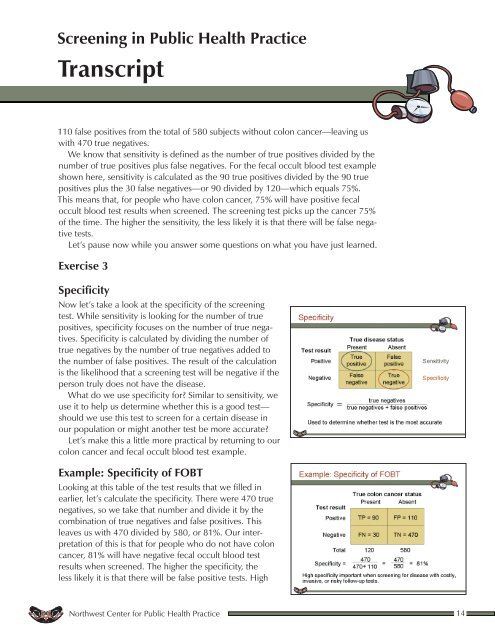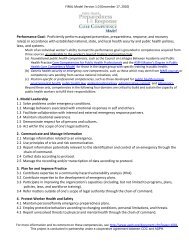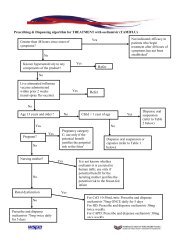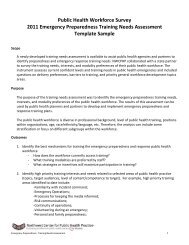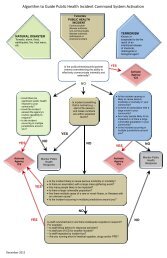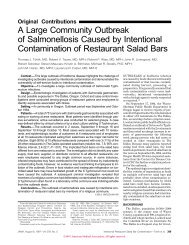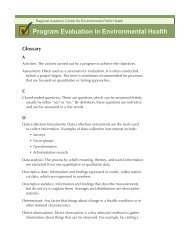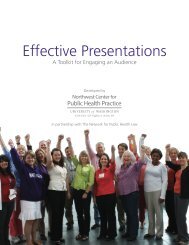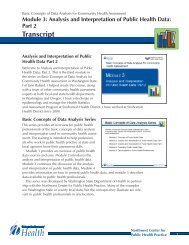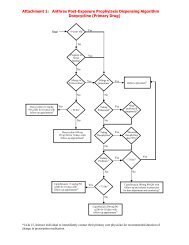Course transcript - Northwest Center for Public Health Practice
Course transcript - Northwest Center for Public Health Practice
Course transcript - Northwest Center for Public Health Practice
- No tags were found...
You also want an ePaper? Increase the reach of your titles
YUMPU automatically turns print PDFs into web optimized ePapers that Google loves.
Screening in <strong>Public</strong> <strong>Health</strong> <strong>Practice</strong>Transcript110 false positives from the total of 580 subjects without colon cancer—leaving uswith 470 true negatives.We know that sensitivity is defined as the number of true positives divided by thenumber of true positives plus false negatives. For the fecal occult blood test exampleshown here, sensitivity is calculated as the 90 true positives divided by the 90 truepositives plus the 30 false negatives—or 90 divided by 120—which equals 75%.This means that, <strong>for</strong> people who have colon cancer, 75% will have positive fecaloccult blood test results when screened. The screening test picks up the cancer 75%of the time. The higher the sensitivity, the less likely it is that there will be false negativetests.Let’s pause now while you answer some questions on what you have just learned.Exercise 3SpecificityNow let’s take a look at the specificity of the screeningtest. While sensitivity is looking <strong>for</strong> the number of truepositives, specificity focuses on the number of true negatives.Specificity is calculated by dividing the number oftrue negatives by the number of true negatives added tothe number of false positives. The result of the calculationis the likelihood that a screening test will be negative if theperson truly does not have the disease.What do we use specificity <strong>for</strong>? Similar to sensitivity, weuse it to help us determine whether this is a good test—should we use this test to screen <strong>for</strong> a certain disease inour population or might another test be more accurate?Let’s make this a little more practical by returning to ourcolon cancer and fecal occult blood test example.Example: Specificity of FOBTLooking at this table of the test results that we filled inearlier, let’s calculate the specificity. There were 470 truenegatives, so we take that number and divide it by thecombination of true negatives and false positives. Thisleaves us with 470 divided by 580, or 81%. Our interpretationof this is that <strong>for</strong> people who do not have coloncancer, 81% will have negative fecal occult blood testresults when screened. The higher the specificity, theless likely it is that there will be false positive tests. High<strong>Northwest</strong> <strong>Center</strong> <strong>for</strong> <strong>Public</strong> <strong>Health</strong> <strong>Practice</strong> 14


